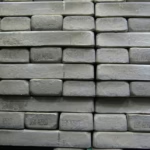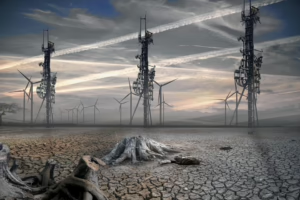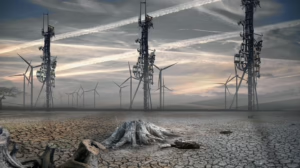Geography and Power: How Maps Rewrote Our Understanding of the World
Introduction
Maps are much more than mere representations of geographical features; they are powerful tools that have shaped our understanding of the world and framed socio-political narratives for centuries. From ancient civilizations to modern society, the art and science of cartography have played pivotal roles in the distribution of power, knowledge, and resources. This article delves into how geography and power intersect through the medium of maps, exploring their historical evolution, cultural significance, and lasting impact on contemporary society.
The Evolution of Cartography
Ancient Maps
The journey of cartography began with ancient civilizations who sought to visualize their surroundings. Early maps were often tied to religious or mythological beliefs, as seen in the Babylonian maps, which depicted the world as a flat disk surrounded by water. Greek philosophers like Ptolemy introduced more systematic approaches to mapping, laying the groundwork for geographic understanding. Importantly, these early maps were not only navigational tools but also exercises in power, serving to establish territorial claims.
Medieval Maps
During the Middle Ages, maps became less scientifically accurate and more symbolic. The T-O map, for instance, represented the world as a circle divided into three parts—Asia, Europe, and Africa—reflecting a Eurocentric worldview. This period highlighted the influence of religion and cultural narratives on geographical representation, as maps often included representations of biblical events.
The Age of Discovery
The Age of Discovery from the 15th to the 17th centuries marked a paradigm shift in cartography. Explorers like Columbus and Magellan expanded the known world, and mapping became a tool of empire. The Mercator projection, developed in the 16th century, facilitated navigation but also distorted the relative sizes of continents, particularly underrepresenting Africa and emphasizing Europe. This mapping approach influenced perceptions of geopolitical power, reinforcing colonial ambitions and narratives that privileged Western civilization.
Modern Cartography
The 19th and 20th centuries saw the rise of scientific cartography, with advances in technology like GPS and GIS (Geographic Information Systems) allowing for precise mapping. Maps became essential tools for governments, military strategists, and businesses, using spatial data to inform decision-making. Modern maps reflect political boundaries, economic resources, and demographic trends, underpinning the intricate relationship between geography and power.
Maps as Instruments of Power
Manipulating Perceptions
Maps have the power to shape perceptions and influence public opinion. The choice of what to include or exclude significantly impacts narratives. For example, maps that emphasize national borders can foster a sense of nationalism, while those depicting global interconnectedness may promote a sense of global citizenship.
Additionally, the portrayal of historical events in maps can alter public memory. A well-documented example is the “Lost Cause” narrative in American history, where maps represent the Confederacy’s motivations and battles in a manner that romanticizes their struggle, thereby influencing contemporary discussions around race and power dynamics.
Geopolitical Strategies
Geopolitics relies heavily on cartography to make strategic decisions. Governments often use maps to illustrate territorial disputes, natural resources, and military assets. The ongoing territorial disputes in the South China Sea highlight how cartographic claims are used to assert national sovereignty, often disregarding historical contexts or international norms.
Maps can also serve as tools of propaganda. During the Cold War, for instance, both the United States and the Soviet Union created maps that showcased ideological superiority, reinforcing their respective narratives about freedom and oppression. The Cold War’s tension between these superpowers was as much about geographical strategy as it was about ideology.
Environmental Mapping
In contemporary times, environmental cartography has become increasingly significant. Climate change, resource distribution, and ecological mapping are crucial for understanding the geographical aspects of global issues. Maps like the “Earth at Night” or “Climate Change Heat Maps” visualize information crucial for policy-making and public awareness. The power dynamics involved in environmental issues often highlight disparities between developed and developing nations, raising questions about equity and responsibility.
Cultural Significance of Maps
Identity and Representation
Maps serve as cultural artifacts that encode identities, beliefs, and values. They can act as a form of social memory, representing how communities understand their place in the world. For indigenous populations, maps are often tied to cultural storytelling and land rights, emphasizing their connection to territory.
The practice of “counter-mapping” has emerged as a form of resistance against dominant narratives. This phenomenon involves creating maps that depict alternative geographies, challenging the authority of traditional maps. Indigenous groups and marginalized communities often utilize counter-mapping to reclaim narratives that are historically overlooked or misrepresented.
Art and Aesthetics
Maps have also permeated art and literature, shaping how we conceptualize space and place. Artistic interpretations of maps can challenge conventional geographical narratives, offering new ways of understanding relationships between people and their environments. Artists like Keri Smith have explored the aesthetics of maps, prompting viewers to question their relationship with geography.
Technology and the Future of Mapping
Geographic Information Systems (GIS)
Modern technology has revolutionized mapping. GIS has enabled the integration of spatial data with analytical tools, creating dynamic maps that reflect real-time changes. This technological advancement has transformed everything from urban planning to disaster management, empowering communities to engage with their data.
Crowdsourced Mapping
Platforms like OpenStreetMap and Google Maps have democratized cartography, allowing individuals to contribute to mapping projects. This shift challenges traditional power dynamics by giving voice to communities often marginalized in geographical representations. Crowdsourced mapping has been particularly beneficial in disaster response, where up-to-date information is crucial for effective intervention.
Ethical Considerations
However, the rise of technology in mapping raises ethical questions surrounding privacy, surveillance, and data ownership. The potential for maps to be used as tools of oppression is significant, as seen in cases where governments use location data to track citizens. The responsibility of cartographers and map users in this increasingly digital landscape necessitates a critical examination of the implications of their work.
Conclusion
The relationship between geography and power as depicted through maps is intricate and multifaceted. From ancient maps that established territorial claims to modern GIS technologies that facilitate data-driven decision-making, the influence of maps is profound and far-reaching. As we navigate a world increasingly shaped by complex political and environmental challenges, understanding the power dynamics inherent in cartography becomes crucial.
Maps are not merely static images but are active agents in shaping our perceptions, identities, and socio-political realities. As we reflect on the evolving role of maps in society, we are reminded that how we represent the world influences how we inhabit it.
References
-
Cartwright, William, and George W. F. McEwen. Geographic Information Science and Systems. Wiley, 2011.
-
Harley, J.B. “Deconstructing the Map.” Cartographica: The International Journal for Geographic Information and Geovisualization, vol. 26, no. 2, 1989, pp. 1-20.
-
Wood, Denis. The Power of Maps. Guilford Press, 1992.
-
Ptolemy, Claudius. Geographia. Translated by R. A. Parker, 2000.
-
Muehrcke, Philip C., and Juliana O. Muehrcke. Map Use: Reading and Analysis. Onward Press, 2019.
-
Slocum, Terry A., et al. Thematic Cartography and Geographic Visualization. Prentice Hall, 2005.
-
D’Andrea, Laura, et al. “Crowdsourcing Geographic Knowledge: Volunteered Geographic Information (VGI) in Theory and Practice.” Geographic Information Science and Systems, 2012.
-
Tuan, Yi-Fu. Space and Place: The Perspective of Experience. University of Minnesota Press, 1977.
-
Crampton, Jeremy W. “Cartography: Maps 2.0.” Geographical Review, 2009.
-
Sui, Daniel Z., and Sean Z. Anderson (eds.). Crowdsourcing Geographic Knowledge: Volunteered Geographic Information (VGI) in Theory and Practice. Springer, 2012.
This article provides a comprehensive overview of how maps have influenced our understanding of geography and power. Would you like to explore any specific sections further or add more details?


























Add Comment